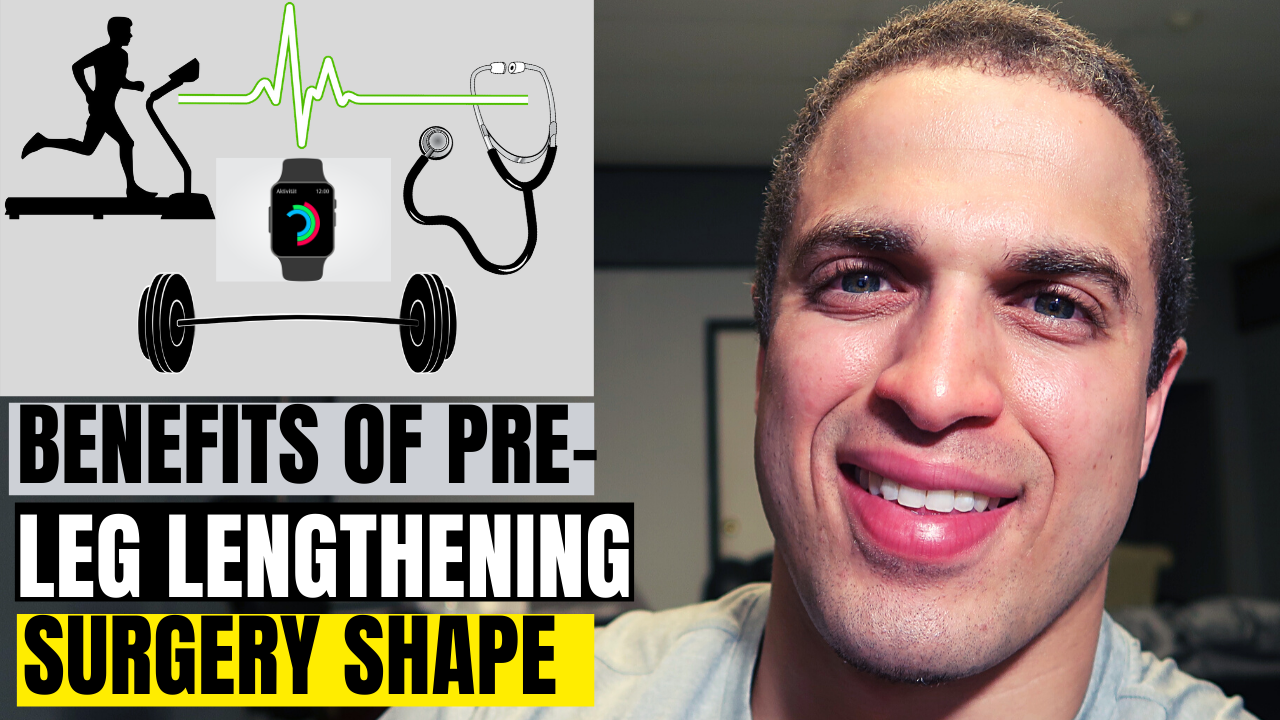Getting Fit Before Limb Lengthening Surgery

The healthier you are going into surgery, the quicker and easier your recovery will be post-op. Now, when I say “getting in shape” or “getting fit” I do not mean you have to be super lean as that could actually work against you.
What I’m referring to is having a good body weight, sufficient flexibility in your muscles, good muscle strength, and decent cardio conditioning.
Body weight
So why do you need to make sure your bodyweight is within a healthy range prior to your limb lengthening?
Well the main reason is to prevent aggressive weight bearing and or force on the legs too soon. Even though a lot of people are opting for the internal fixation nails like the PRECICE-STRYDE which are very strong and full weight bearing, if you add to that, excessive force, a problem could occur.
Other reasons are you will have an easier time moving around and would have more energy to devote to your PT, and of course less chance of developing a poor health condition that could further complicate things.
Things like monitoring your diet can help you maintain a good weight range.
Flexibility
Besides your health, muscle flexibility is one of the most important aspects to be able to get your full desired height within a safe range successfully and preventing muscle contractures or rigidity. This is because you will be lengthening your bones and your muscles come along for the ride.
So by being able to stretch effectively throughout a full ROM prior to surgery, you set yourself up on the path to success after.
I know for me getting the tibia done, I would stretch my gastrocnemius, soleus, tibialis anterior as well as my thigh muscles (quads, hams, glutes) because I didn’t want any potential restrictions affecting me more than necessary. I did a stretching video a while back that can be used as reference.
Muscle Strength
What’s the point of having loose and limber muscles without having strength behind them? A lot of people think a strong muscle is a stiff muscle. This couldn’t be further from the truth.
The fact is, when you do the distraction and gain your new bone length, you create new muscle too. This new muscle will be super weak as it was “just born”. But if you have weak muscles to begin with, you really risk the chance of sustaining an injury when you start running, lifting or playing sports again.
Also, if you have strength in your core, arms and other muscles it’ll just make moving around as well as your PT that much easier.
I remember I was in really good shape before my surgery and I feel that’s what helped me recover much more rapidly.
So by strengthening a muscle through a ROM, such as in a good weight training routine with moderate weights should be sufficient. I just suggest stopping leg training at least 1 week prior to surgery to prevent too much inflammation in the legs and joints.
Cardio Conditioning
How does cardio help when you’re just going to be sedentary over the next few months after limb lengthening surgery? Well, even though you’re not going to be running around anytime soon, having good blood flow is important to stave off any blood clots or other complications
Also, good vascular health improves nutrient partitioning which is essentially how efficiently your body organizes the food you eat into the right places. For example protein to muscles, carbs for energy rather than being stored, etc. This also helps bone healing by carrying the necessary micronutrients.
So now the question is...How?
Well I always say start at least 6-8 weeks out from your surgery. Develop a consistent workout and cardio routine with a balanced diet full of whole foods. If you do this, I can promise you, your rebound from the procedure will be that much easier.
-Victor Egonu